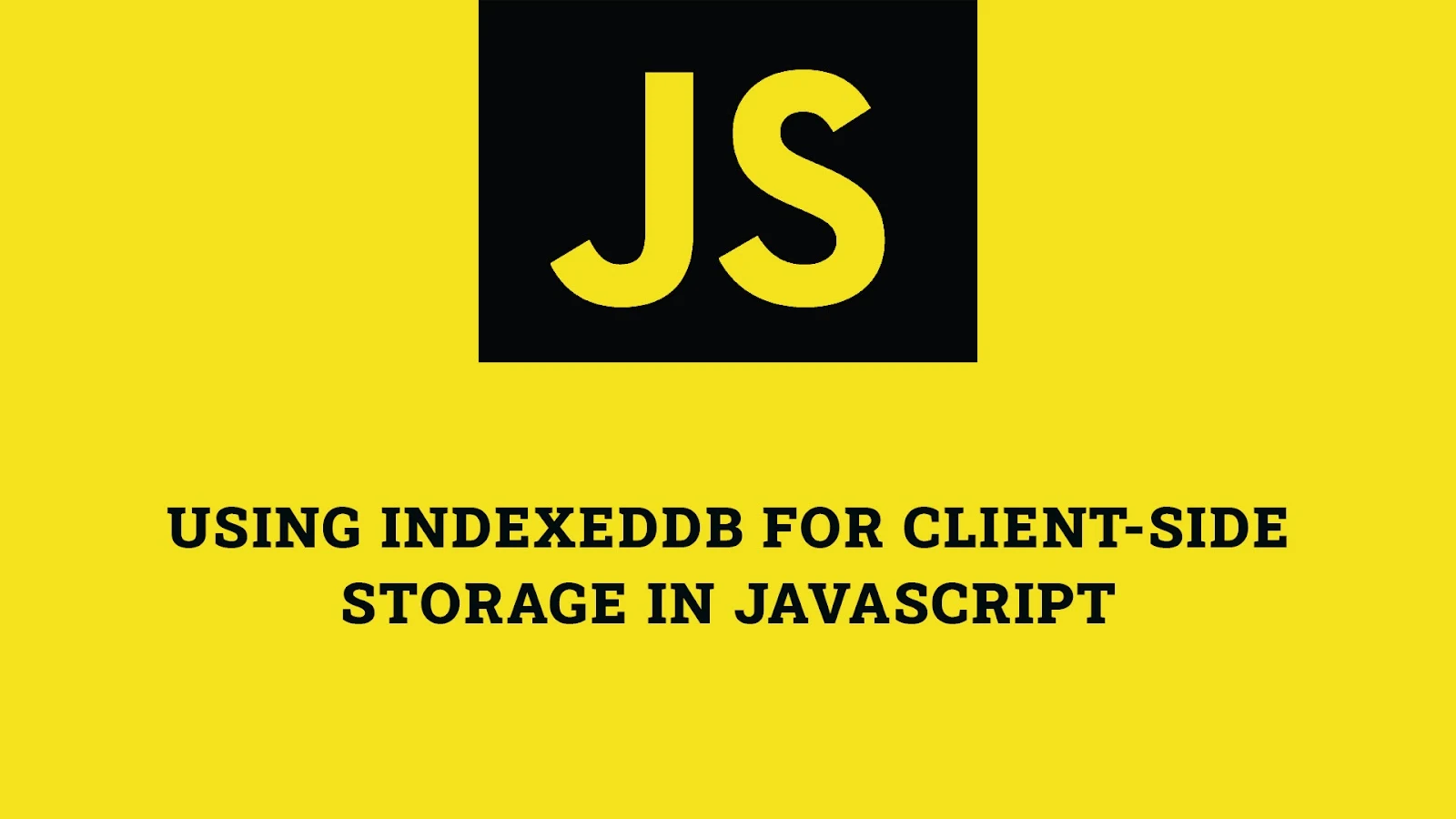Introduction
IndexedDB is a low-level API for storing large amounts of structured data on the client-side, including files and blobs. It allows for efficient data querying and manipulation, making it a powerful tool for web applications. This article explores how to use IndexedDB in JavaScript, providing comprehensive explanations and practical examples to help you master client-side storage.
Understanding IndexedDB
IndexedDB is a web browser API for storing significant amounts of structured data, including files and blobs. It allows you to create, read, update, and delete data using a transactional database system. IndexedDB is ideal for web applications that require offline storage, real-time data synchronization, or large-scale data storage.
Key Concepts of IndexedDB
- Database: A container for object stores. Each database has a name and version number.
- Object Store: A container for storing data objects. Each object store has a name and a key path that uniquely identifies each object.
- Transaction: A way to ensure that a series of operations on the database are executed atomically.
- Index: A way to search for data within an object store based on a property of the objects.
- Cursor: A mechanism for iterating over multiple records in an object store or index.
Setting Up IndexedDB
To use IndexedDB, you need to open a database and create object stores. The following example demonstrates how to set up an IndexedDB database and object stores.
Example: Opening a Database and Creating Object Stores
const request = indexedDB.open('myDatabase', 1);
request.onupgradeneeded = (event) => {
const db = event.target.result;
const objectStore = db.createObjectStore('customers', { keyPath: 'id', autoIncrement: true });
objectStore.createIndex('name', 'name', { unique: false });
objectStore.createIndex('email', 'email', { unique: true });
};
request.onsuccess = (event) => {
const db = event.target.result;
console.log('Database opened successfully');
};
request.onerror = (event) => {
console.error('Error opening database', event.target.errorCode);
};In this example, a database named `myDatabase` is opened, and an object store named `customers` is created with an auto-incrementing primary key and indexes for the `name` and `email` properties.
Performing CRUD Operations
IndexedDB allows you to perform CRUD (Create, Read, Update, Delete) operations on data stored in object stores. The following examples demonstrate how to perform these operations using IndexedDB.
Creating Data
To create (add) data in an object store, you can use the add method.
const transaction = db.transaction('customers', 'readwrite');
const objectStore = transaction.objectStore('customers');
const request = objectStore.add({ name: 'John Doe', email: 'john.doe@example.com' });
request.onsuccess = () => {
console.log('Data added successfully');
};
request.onerror = (event) => {
console.error('Error adding data', event.target.errorCode);
};In this example, a new customer record is added to the customers object store.
Reading Data
To read data from an object store, you can use the get method or a cursor.
const transaction = db.transaction('customers', 'readonly');
const objectStore = transaction.objectStore('customers');
const request = objectStore.get(1);
request.onsuccess = () => {
const customer = request.result;
console.log(customer);
};
request.onerror = (event) => {
console.error('Error reading data', event.target.errorCode);
};In this example, a customer record with the key 1 is retrieved from the customers object store.
Updating Data
To update data in an object store, you can use the put method.
const transaction = db.transaction('customers', 'readwrite');
const objectStore = transaction.objectStore('customers');
const request = objectStore.put({ id: 1, name: 'Jane Doe', email: 'jane.doe@example.com' });
request.onsuccess = () => {
console.log('Data updated successfully');
};
request.onerror = (event) => {
console.error('Error updating data', event.target.errorCode);
};In this example, the customer record with the key 1 is updated in the customers object store.
Deleting Data
To delete data from an object store, you can use the delete method.
const transaction = db.transaction('customers', 'readwrite');
const objectStore = transaction.objectStore('customers');
const request = objectStore.delete(1);
request.onsuccess = () => {
console.log('Data deleted successfully');
};
request.onerror = (event) => {
console.error('Error deleting data', event.target.errorCode);
};In this example, the customer record with the key 1 is deleted from the customers object store.
Using Cursors
Cursors allow you to iterate over multiple records in an object store or index. This is useful for processing or displaying large datasets.
Example: Iterating Over Records with a Cursor
const transaction = db.transaction('customers', 'readonly');
const objectStore = transaction.objectStore('customers');
const request = objectStore.openCursor();
request.onsuccess = (event) => {
const cursor = event.target.result;
if (cursor) {
console.log(`Name: ${cursor.value.name}, Email: ${cursor.value.email}`);
cursor.continue();
} else {
console.log('No more entries');
}
};
request.onerror = (event) => {
console.error('Error iterating over records', event.target.errorCode);
};In this example, a cursor is used to iterate over all customer records in the customers object store. The name and email of each customer are logged to the console.
Fun Facts and Little-Known Insights
- Fun Fact: IndexedDB allows you to store large amounts of structured data, including files and blobs, making it a powerful tool for web applications that require offline storage.
- Insight: IndexedDB operations are asynchronous, meaning they do not block the main thread, allowing for a smoother user experience even when handling large amounts of data.
- Secret: You can use the
onversionchangeevent to handle database version changes, allowing you to update your database schema without losing existing data.
Conclusion
Using IndexedDB for client-side storage in JavaScript provides a robust and flexible mechanism for managing large amounts of structured data. By understanding the key concepts of IndexedDB, setting up a database, performing CRUD operations, and using cursors, you can build powerful web applications that efficiently store and query data. Mastering IndexedDB will enable you to create more responsive and interactive user experiences.
 Reviewed by Curious Explorer
on
Saturday, November 30, 2024
Rating:
Reviewed by Curious Explorer
on
Saturday, November 30, 2024
Rating:




No comments: